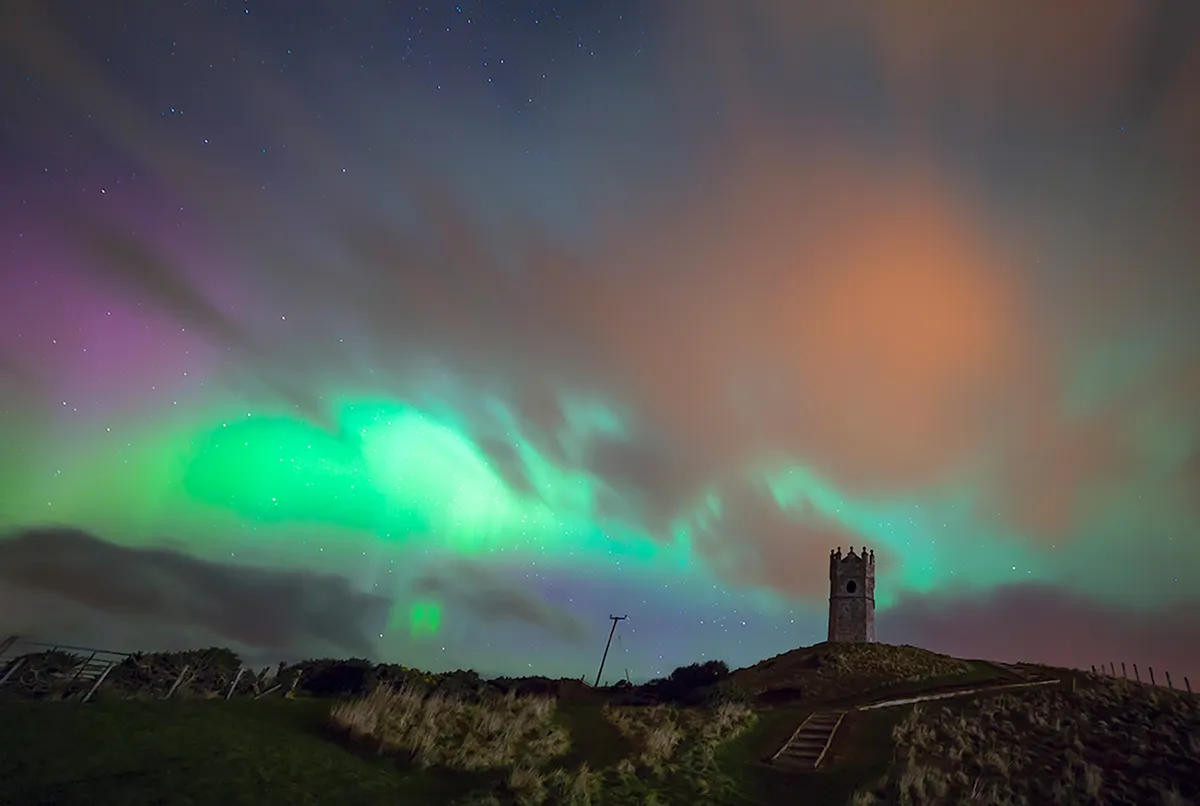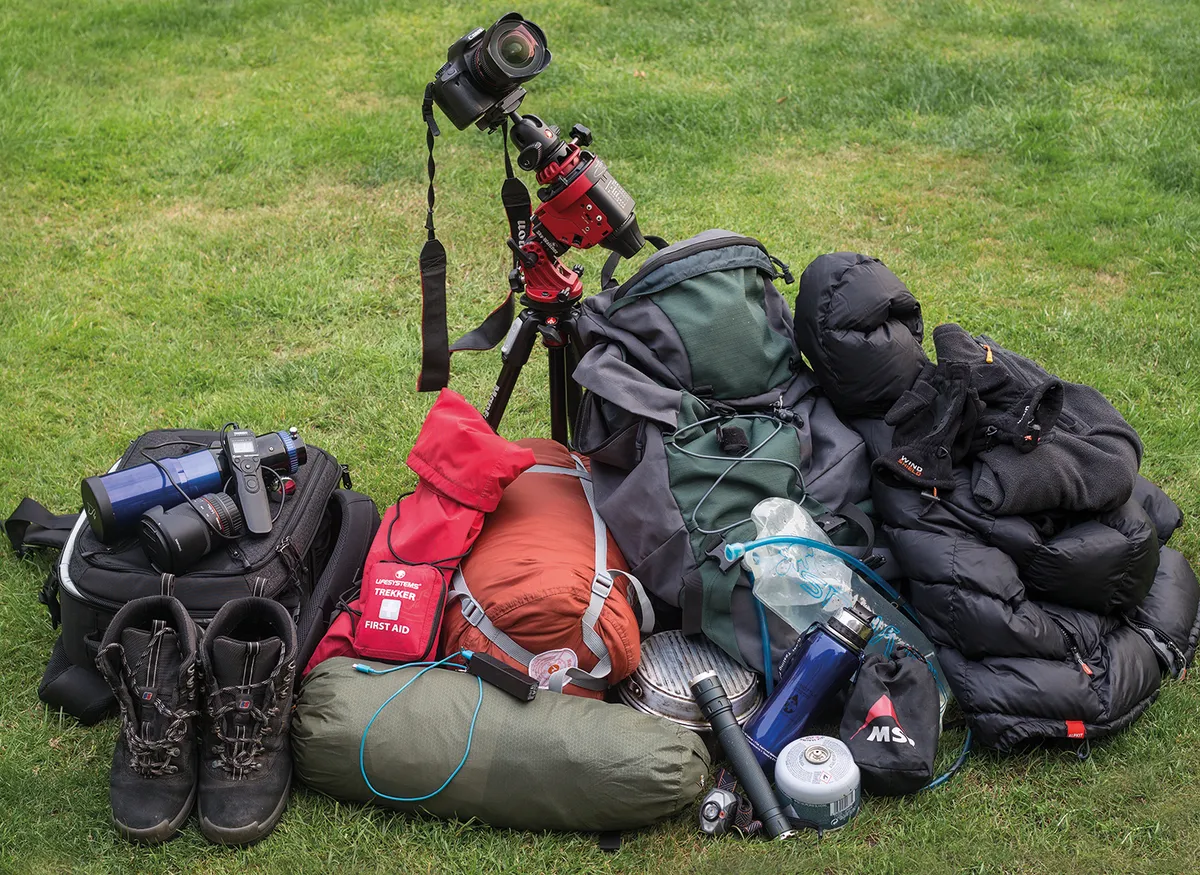The Highlands and islands of Scotland are a fantastic place for astronomy, home to multiple dark sky sites far away from the light pollution urban centres.
But even after you’ve decided where to go and how to get there the planning is far from over.
Whether you’re attempting some astrophotography, or simply there to stargaze, deciding what to take with you to get the best views while staying safe can be a challenge.
In this guide, we walk you through everything you need to take with you – from optical equipment to clothing – when taking a trip out into the wilds of Scotland for a spot of stargazing.
What astronomy kit should I take when stargazing in Scotland?
While there are plenty of spots where you can set up right next to your car and get a great view, to reach the darkest skies you’ll probably need to hike at least a short way into the countryside.
If you are, then weight will be a serious concern, so think carefully before you go about what you want to achieve on your trip so you don’t take more than you need.
Dark skies are the perfect place to get back to basics with some naked eye observing, but it’s always worth packing a pair of binoculars to go a little deeper.
Many objects, however, require a telescope to see and small refractors are compact and robust enough to withstand a trip in a backpack.

What if I want to do astrophotography on my trip?
A DSLR with a select set of lenses is the go-to choice for most remote trips, but you’ll still want to take a tripod and mount.
The solid, sturdy set up most astronomers have at home will be too heavy to carry around the Scottish Highlands – fortunately there are now portable tracking mounts specifically designed for such trips.
Finally ensure whatever you take is protected from dirt, the elements and accidental knocks.
How do I keep dew off my optics?
An affordable, lightweight solution is using handwarmers attached to the lens with hairbands – we prefer the reusable ones as not only are they environmentally friendly, they release their heat faster than disposable ones.
In sub-zero conditions, however, you might need to heat your optics electrically using a dew-band connected to a portable charger, though you may be conscious of weight when deciding how large a battery to take. Remember if you are using disposable handwarmers or batteries, to take any rubbish home with you.
What other equipment will I need to go on a remote stargazing trip?
Safety should always be at the forefront of your mind when planning a trip like this – make sure you have a first aid kit and a supply of food and water, as well as a phone and portable power bank in case you need to call for help.
It’s a good idea to carry a sleeping bag with you regardless of how long you plan on staying out in case of emergencies, especially in winter.
A decent torch and headtorch are vital pieces of safety equipment for night hikes, and you should have a regular white light torch as well as the red light one you use while observing.
If you’re planning on overnight camping then you’ll also need a small, light-weight tent. Make sure both you and your equipment will fit inside.
If you’re planning on wild camping, check that you have permission to do so and follow the Scottish Outdoor Access Code. Remember to leave no litter behind you.
It’s a good idea to pack this all into a dry bag inside your rucksack, as this will help to keep all your valuable and sensitive equipment clean and dry.
What should I wear to stay warm while stargazing in Scotland?
While a Scottish night might be a cold and windy, with a little planning and thought you should be able to stay comfortably warm throughout the night.
Wrap yourself in multiple thin layers, as this traps warm air more effectively than one thick jumper.

Under layers
It’s worth investing in a good base layer and socks that will wick moisture away from your skin as you sweat – damp clothes will quickly sap away your body heat.
It won’t be easy to change these in the field, so ensure anything going next to your skin is comfortable.
Over these will go your jumpers and fleeces which are your main sources of insulation. Make sure to check your mobility, as too many layers can end up restricting your movement.
Outer layers
Out on the open Highlands, the whipping wind can lower your body warmth even if the ambient temperature isn’t that low.
Look for windproof clothing but remember: windproof and waterproof are not the same thing.
For your outer jacket, down is perfect for stargazing in terms of warmth to weight ratio. It’s worth spending the money for a higher quality fill, as cheap jackets tend to have a lower insulation value. Look for makes with a high collar and a hood to keep your neck warm.
A thermal hat is a good choice as it will cover your head and ears and keep them warm.
Pick gloves which don’t impair your dexterity – there’s no point having thick gloves, if you take them off every time you need to press the small buttons of your mount’s control pad.
Finally, when it comes to shoes getting something comfortable that fits is key, but good ankle support and insulation are things you may want to look for.